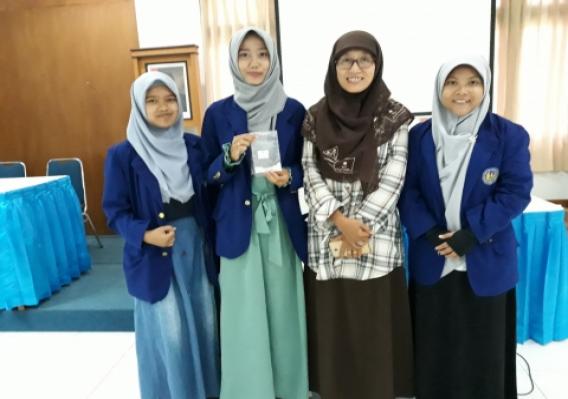Sugarcane Bagasse to Improve Quality Water

Water is the most crucial need for humans, including for consumption and daily needs. Unfortunately, the amount of clean water decreases due to water pollution by textile industry waste that contains dyes harmful to health. One of the dyes commonly used in the textile industry is congo red. The presence of dye congo red in the aquatic environment can interfere with the lives of various species of living things because the nature of the dye congo red is toxic. Congo red that accumulates in the body can cause impaired liver, kidney, and nerve function.
About this problem, alternative methods are used by photocatalysts with advantages, including: can separate pollutant compounds, are used for water decomposition, degrade organic compounds, have strong oxidation-reduction properties, chemical bonds are stable to light, and are insoluble in water.
Departing from this problem, FMIPA UNY students who are members of the Research Student Creativity Program (PKMP) team consisting of Dinar Indah Lufita Sari (Kimia), Zamhariroh Marsa Fajarwati (Chemistry), Lina Cahyaningsih (Chemistry) with supervisor Dr. Kun Sri Budiasih M.Si, made a photocatalyst application of cuo doped sio2 from Bagasse to Improve Water Quality.
It is making the photocatalyst cuo doped sio2 from sugarcane waste because a lot of bagasse waste has not been utilized. After further investigation, sugarcane bagasse contains 71% silica. Silica in bagasse can degrade organic compounds in textile waste, namely congo red. The function of using cuophotocatalyst doped sio2 is to decompose waste into substances that are safe for the environment with the help of sunlight which is abundant on earth.
The method of making cuo photocatalyst doped sio2 through 5 stages, namely silica preparation from bagasse. In this process, the sugarcane husk is washed with clean water and then dried in the sun for two days. The dried cane husks are then burned in an open environment to get charcoal. The charcoal obtained was then calcined using a muffle furnace at a temperature of 800°C for 6 hours to produce gray-white ash.
The next process is demineralization of silica from bagasse ash; characterization of silica from bagasse ash including XRD characterization, SEM/EDX characterization, UV-Vis characterization of solids; preparation of copper oxide (cuo) doped silica (sio2); and photocatalyst activity test against congo red using UV-Vis spectroscopy (spectronic 20). (witono, DNA)
Source link : https://www.uny.ac.id/berita/ampas-tebu-untuk-meningkatkan-kualitas-air






